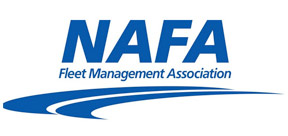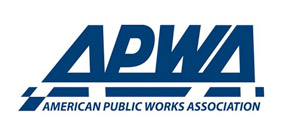Salem’s eye in the sky: How drones are transforming public works operations

When a devastating ice storm hit Salem, Ore., in February 2021, the city’s public works department didn’t rely solely on their boots being on the ground. Instead, it launched drones into the sky. These small, agile aircraft provided a sweeping aerial view of the storm’s aftermath, allowing the city to assess damage efficiently and safely.
“We were able to document the damage both before and after the cleanup,” said Nitin Joshi, environmental and operations technology manager for Salem. “That aerial documentation helped with our response strategy and accurate FEMA filings. It was a game changer.”
Since 2018, Salem has run a drone-as-a-service program. What started as a spark of curiosity has grown into a city-run operation with licensed pilots, integrated software and real-time applications across emergency response, environmental monitoring and infrastructure planning.
The idea took root in 2017, after the public works team attended a conference on municipal drone use. Inspired by other cities, Salem launched a yearlong research effort, learning from early adopters in Washington and beyond.
“We didn’t want to fly drones just because we could,” Joshi said. “We wanted to make sure it served a public-focused role with real strategic value.”
The city’s research examined costs, drone models, training, FAA regulations and how to integrate drones with existing city systems. A key decision was to house the program within public works instead of with law enforcement, prioritizing transparency and public trust.
“It was important to us that this stayed a public-serving function,” Joshi added. “The value was in emergency assessments, infrastructure inspections and environmental data, not law enforcement.”

Today, Salem operates four active drones. DJI Mini Pro 3s handle light mapping and promotional tasks, while more robust DJI Phantom models manage inspections and data collection. Twelve licensed drone pilots, mostly from the city’s Geographic Information Systems (GIS) team, run operations.
“GIS is the perfect home for this,” said James Fuing, public works geospatial technology supervisor. “We’re already managing spatial data. Integrating drone imagery adds incredible value.”
City staff must undergo rigorous training, including coursework, observation and passing the FAA Part 107 certification. Salem reimburses test fees and supports ongoing training.
“This isn’t a hobby,” Fuing emphasized. “It’s about understanding airspace, coordinating with airports and being extremely aware of surroundings. We take this very seriously.”
Drones have been especially valuable during emergencies. In 2021, they helped assess widespread tree damage and road blockages from the ice storm without putting any staff at risk.
“Having real-time aerial data is invaluable to us,” Joshi said. “It’s not just flying over the damage and taking a few pictures. It’s more about visualizing, measuring and acting on it quickly.”
Drones were also crucial in evaluating a landslide on River Road, a geologically unstable area. “We needed to get eyes on the slide to understand the impact,” said Fuing. “It helped us not just respond, but think through future planning and safer design from homes being built in or near those areas.”
Beyond crises, Salem uses drones to monitor environmental health, especially along the Willamette River. The city tracks invasive species, like Ludwigia, which can choke waterways and harm ecosystems.
“We use orthomosaic imagery to track vegetation changes over time,” Fuing explained. “That helps us assess growth patterns and refine our mitigation efforts.”
This data also supports grant applications, regulatory reports and public education about Salem’s environmental protection work.
In one recent initiative requested by the mayor of Salem, the GIS team flew drones over all 90 of the city parks, capturing high-resolution video and photos. The visuals were used for promotional materials and community outreach, offering residents new perspectives on familiar places and showcasing lesser-known parks.
“We did 90 parks in 90 days,” Joshi said proudly. “We dodged a lot of rain, but we pulled it off.”
The program’s next frontier includes 3-D modeling and infrastructure planning. Currently, the team is preparing a $16 million grant application to improve a remote water treatment plant. Using drone footage and GIS tools, they’re creating detailed 3D mesh models to show current conditions and future scenarios.

“We’re illustrating how nature changes over time and impacts the plant,” Joshi said. “This is no longer just about documentation, it’s about planning and design.”
Despite the program’s success, both Joshi and Fuing caution that such efforts require significant planning, resources and community consideration.
“It’s easy to get excited about the tech,” Joshi said. “But it takes time, training, regulatory navigation and maintenance.”
Flight operations often require coordination with the local airport and careful attention to public perception.
“You can’t just fly a drone whenever you want,” Joshi emphasized. “Everything must be planned.”
Still, they believe Salem’s journey offers a valuable roadmap.
“If we can do it, with a small team and a big idea, any city can,” Joshi said. “But it takes intentionality. That’s what makes the difference between a flashy toy and a transformative tool.”
By grounding drone use in purpose and public service, Salem has enhanced efficiency and deepened its connection with the community. As more cities explore drone technology, Salem’s example shows how innovation can truly reshape local government.
Next Article: Phased-in code compliance increases occupancy in historic buildings



